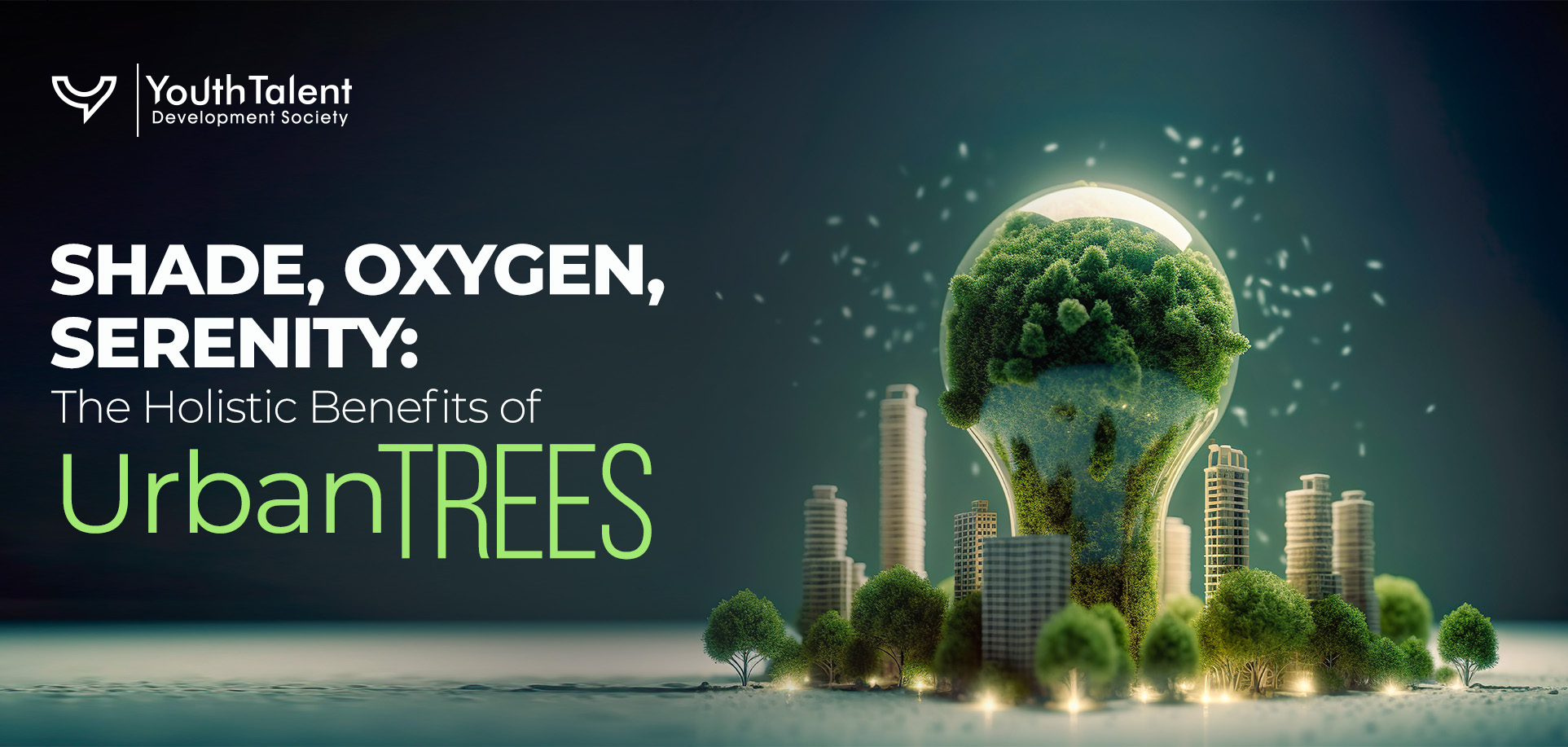
Shade, Oxygen, Serenity: The Holistic Benefits of Urban Trees
Introduction: Cultivating Healthier Urban Environments
In the concrete jungle of city life, amidst the hustle and bustle, nature’s green guardians stand tall, offering more than just visual delight; the humble tree is a silent hero, offering many health benefits to city dwellers.
Amid the chaos of urban life, the #PlantAMillionTrees Campaign emerges as a beacon of hope, aiming to transform our cities into verdant wellness havens. In this blog, join us as we explore how tree plantation initiatives can pave the way for greener, healthier cities and discover how individuals, corporations, and industries can contribute to this noble cause.
From cleaner air to quieter streets, trees are the unsung heroes of our urban landscape, and it’s time we gave them the credit they deserve! Let’s embark on a journey to discover how breathing is more accessible in the city, starting with embracing the power of trees.
Must read: The Green Revolution: Planting Seeds of Change Through Tree Plantation Drives
The Healing Power of Trees: Improving Air Quality:
Let’s face it—city air isn’t a breath of fresh air. With all those cars, factories, and other pollution sources, it’s no wonder our lungs are crying out for help. Fortunately, nature offers a powerful antidote: trees. These silent heroes act as natural air purifiers, absorbing harmful pollutants and exhaling life-giving oxygen.
Trees ingest carbon dioxide through photosynthesis—a primary culprit in global warming—while trapping noxious particles like nitrogen dioxide and sulfur dioxide.
By strategically planting trees in urban hubs, we can wage war against pollution and forge healthier environments. Research confirms that bolstering tree canopy coverage significantly curbs air pollutants, translating into tangible benefits for urban dwellers, from cleaner lungs to uplifted spirits.
With each sapling we nurture, we cultivate greenery and sow the seeds of better public health for generations to come.
Cooling Urban Heat Islands: Alleviating Heat Stress
Have you ever noticed how much hotter it feels in the city compared to the suburbs or countryside? Asphalt and concrete surfaces absorb and retain heat, creating urban heat islands that aggravate heat-related illnesses and discomfort. Trees act as natural air conditioners, providing shade and evaporative cooling, thereby mitigating the adverse effects of urban heat islands.
The canopy of trees acts as a natural barrier against the sun’s rays, reducing surface temperatures and creating microclimates that offer relief from the sweltering heat. Additionally, trees release water vapour through transpiration, cooling the surrounding air and creating a more comfortable environment for pedestrians and residents.
By fostering green spaces within cities, we can combat heat stress and foster a more livable environment for residents, encouraging outdoor activities and social interaction.
Nature’s Sound Barrier: Quieting Urban Noise Pollution:
Life in the city can be noisy—honking horns, jackhammers, you name it. The cacophony of urban life—traffic, construction, and industrial activities—can affect our physical and mental well-being.
But trees offer a sanctuary of peace and tranquillity. Trees act as natural sound barriers, absorbing and deflecting noise pollution to create quieter urban environments. Whether lining busy streets or standing tall in our parks, trees are like nature’s earplugs, helping us tune out the noise and find some serenity in our urban jungle.
By integrating more greenery into our urban landscapes, we can create quieter, more harmonious environments that promote mental well-being and enhance the quality of life for all residents.
Promoting Physical and Mental Health:
But wait, there’s more! Trees aren’t just good for our physical health but also for our mental well-being. Access to green spaces has been linked to increased physical activity, reduced rates of obesity, and improved cardiovascular health.
Studies have shown that spending time in nature can reduce stress, anxiety, and depression, giving us a much-needed mental health boost in our fast-paced world and enhancing our overall quality of life.
By incorporating trees and green spaces into urban planning and design, we can create healthier, more resilient communities where residents can thrive. So whether you’re taking a stroll through the park or just chilling out under a shady tree, remember that nature is the ultimate therapist—and it’s available 24/7, free of charge!
Sustainable Solutions: Meeting Tree Plantation Targets
In our pursuit of a greener tomorrow, it’s essential to understand the significance of tree plantation targets and individual contributions. According to research, an average-sized tree can produce enough oxygen daily to sustain two human beings. Considering an average human lifespan of 79 years, each person requires around 18 trees to provide oxygen throughout their lifetime.
Experts suggest that individuals plant at least ten trees annually to ensure environmental sustainability and combat deforestation. Additionally, governmental regulations and compliance standards can mandate corporations and industries to contribute to tree plantation efforts. Compliance measures may stipulate a specific number of trees to be planted per year per company, encouraging active participation in environmental conservation.
Beyond tree planting, organizations can adopt eco-friendly practices, such as reducing energy consumption, minimizing chemical usage, and promoting sustainable real estate development to mitigate environmental impact and foster a harmonious coexistence with nature.
A Call to Action: Mobilizing Individuals, Corporates, and Industries
YTDS’s #PlantAMillionTrees Campaign invites individuals, corporations, and industries to join in cultivating greener, healthier cities. Individuals can contribute by participating in tree planting initiatives, advocating for green spaces in their communities, and nurturing saplings in their neighbourhoods.
Corporations can support tree plantation efforts through Corporate Social Responsibility (CSR) initiatives, sponsoring tree planting drives, and incorporating green spaces into their office complexes. Industries, recognizing their role in pollution and deforestation, can adopt sustainable practices, comply with environmental regulations, and allocate resources towards tree planting and conservation efforts. Together, we can harness the power of nature to build healthier, more sustainable cities for future generations.
Conclusion: A Greener, Healthier Future
So there you have it, folks—trees are the ultimate multitaskers, cleaning our air, cooling our streets, and calming our minds in one fell swoop. And thanks to initiatives like the #PlantAMillionTrees Campaign, our cities are getting greener and healthier daily.
So let’s give a round of applause to our leafy friends and keep planting those trees! After all, when we breathe better, we live better—and that’s something worth celebrating. As we breathe easier in the city, let us embrace the beauty and benefits of trees, cultivating a symbiotic relationship with nature that nourishes our bodies and souls. Together, we can make our cities greener, healthier, and more vibrant places to live.
As stewards of the planet, we are responsible for nurturing and preserving these green guardians, ensuring a brighter, healthier future for all. Let us heed the call to action, plant seeds of change, and breathe easier in the city. Join us in embracing the transformative power of trees and creating greener, healthier communities for generations to come.


